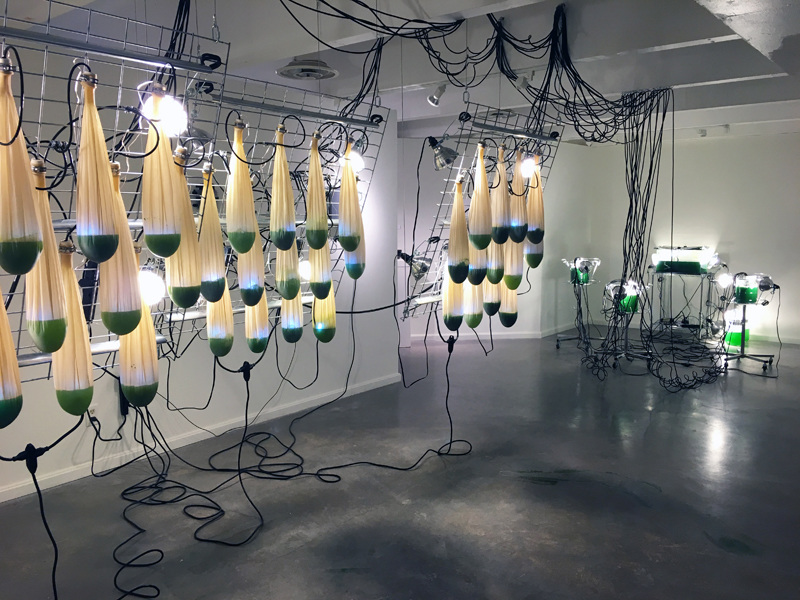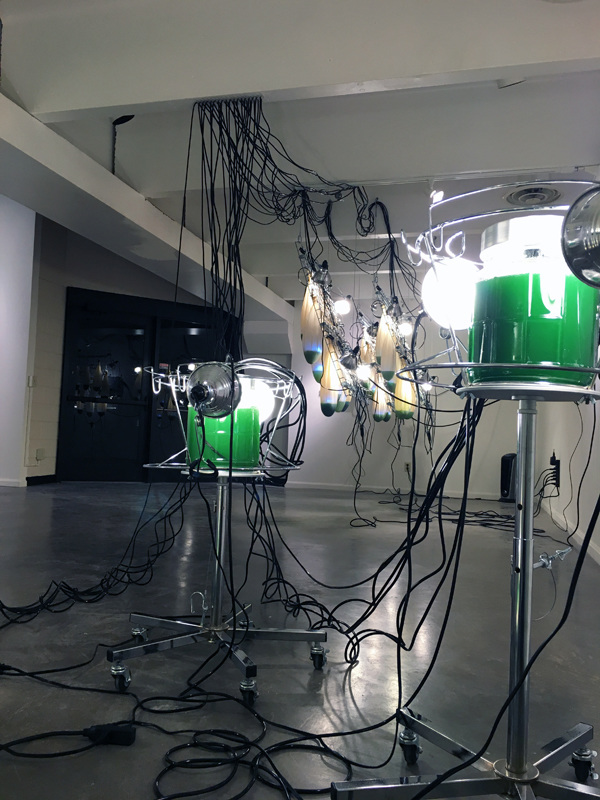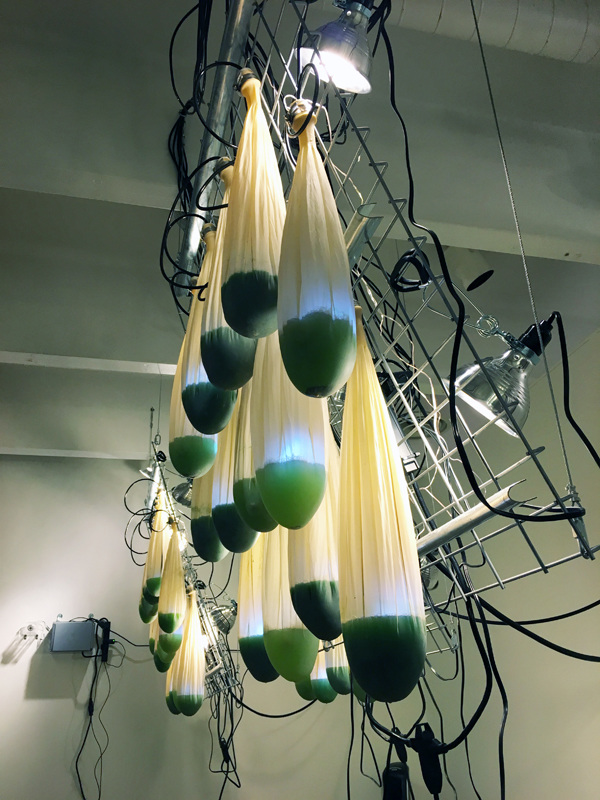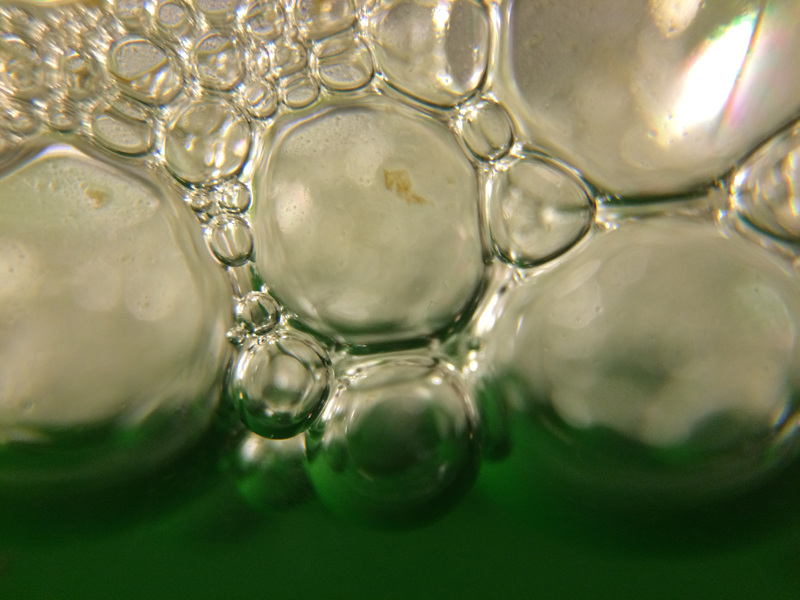A Vision of the Future as a Thing of the Past
Artist Andrea Carlson reviews Alison's Hiltner's latest sci-fi tinged photographs and sculptures, an exhibition-cum-laboratory at the intersection of scientific investigation, dystopian dreams, and memory.
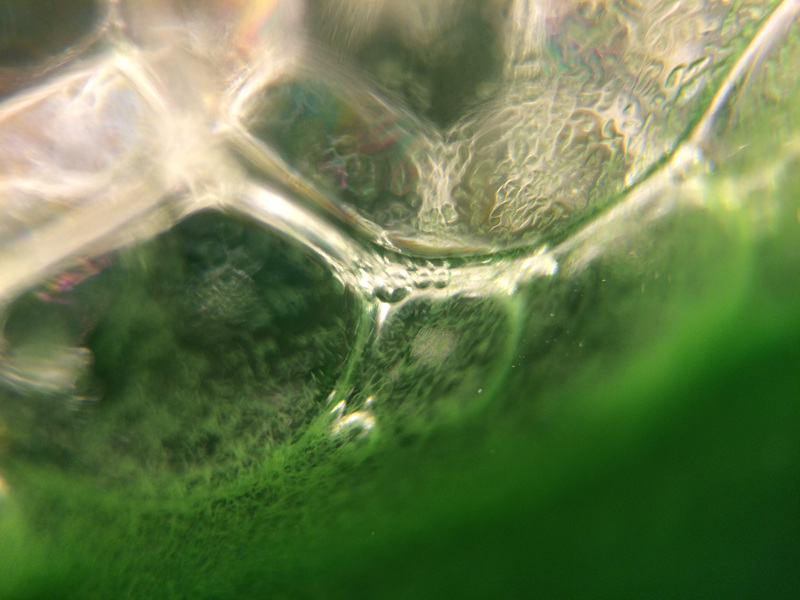
Alison Hiltner‘s new exhibition of sculpture and photography at St. Paul’s Concordia College Art Center is a gem that’s tucked away, but well worth navigating the pedestrian-friendly campus to find. Located in the furthest gallery in a complex system of galleries, the exhibition space sits at the base of a three-floor cement shaft way, complete with a spectacular ventilation system. Hiltner’s work takes full advantage of the sci-fi, bunker-like qualities of the space; in fact, her installation seems to leave something indelible there, forever changing the sensibilities of its confines. The artwork deftly exploits the small gallery’s irregularities, taking that nook of the college sufficiently out of context so that the viewer is presented with what could be, rather than what is. Seen through the lens of her work, the gallery space becomes a laboratory. It’s as if a location scout found the perfect Goldilocks zone from which to grow Hiltner’s work. Yes, grow.
Upon entering the gallery, just to the left, one sees a fish tank and plastic barrels filled with various shades of green algae. On the right, there are a series of tubes, cables, and balloon-adapted bladders hovering overhead. This full and complex apparatus maintains and supports the lives of micro algae, spirulina. The exhibition’s label states that Hiltner
…selected this species because of its frequent connection to being utilized as a CO2 scrubber/oxygen generator and fuel source; it is a journey into cultivating and utilizing this difficult to define cyanobacteria organisms. Spirulina is neither flora or fauna instead it is a mixture of neither and both, deriving it’s energy from photosynthesis (its only solid connection to flora), it also possesses the infrastructure of a unicellular parasite.
To rough out this vision a little more, imagine a few dozen rubbery sacks hung from industrial racks, not unlike a pot rack mounted at an angle. Each of these balloons is filled with a viridian-hued, liquid algal bloom, which froths up as the algae are oxygenated via tubes submerged in each reservoir; those tubes are attached to a compressor which is programmed to inject air into the fluid at various intervals. The sound the assemblage makes is low and ominous, like an idling big rig. If this weren’t Rube Goldberg enough, and it never is, the audience is also invited to breathe on sensors set to override the program when activated and immediately aerate the algae. As the bubbles foam up, the balloons above slightly inflate, jiggle, and collapse in response, as if exhaling.
Past these sculptural objects, the second branch of Hiltner’s exhibition is photographic. Spanning three walls, 25 glossy, or possibly resin-encased photographs depict the blown-up forms of pentagram structures which emerge when bubbles are packed together and share walls. Seeing the images, the gallery-goer has such bubbles freshly in mind, after witnessing their creation in the algae but a moment ago. The photographs isolate the algae and bubbles, strip off the machinery of the sculptures; instead, one can see in them momentary slides of bubbles long-burst, algae long-deceased.
As the title suggests, It Was Tomorrow offers a vision of the future as a thing of the past. Or to put it in other words: she reminds us that the act of remembering is filled with just as much projection as is imagining the future. Hiltner shows us an experience of time in two acts: one of fleeting, irretrievable time as supported by the ever-in-flux algae incubators, and one of static, or frozen, time as presented in her series of photographs. Her sculptures could be the workings of an animate science lab set to curing the ails of a maimed planet, but her photographs read as documentation, evidence and memory. The collection of photography seems to be making a case for posterity, as if archiving our last efforts to salvage a dying planet. As the late director Andrei Tarkovsky argues, this might be the very case for art as well. In the documentary, A Poet in the Cinema (1983), Tarkovsky says: “The artist exists because the world is not perfect. Art would be useless if the world were perfect, as man wouldn’t look for harmony, but would simply live in it.” Hiltner, too, draws attention to an imperfect present in the showing of this glimpse of an immediate possibility.
Related exhibition information: Alison Hiltner: It Was Tomorrow runs October 15 through November 11, in the galleries of Concordia University in St. Paul, and is located in the Concordia Art Center, 1301 Marshall Avenue, at the northwest corner of Marshall Avenue and Syndicate Street North. (Parking is available on Marshall Avenue and Syndicate Street, or in campus lots after 4:30 p.m.) Gallery hours are 10 a.m. – 4 p.m., Monday through Friday, during exhibition dates.
